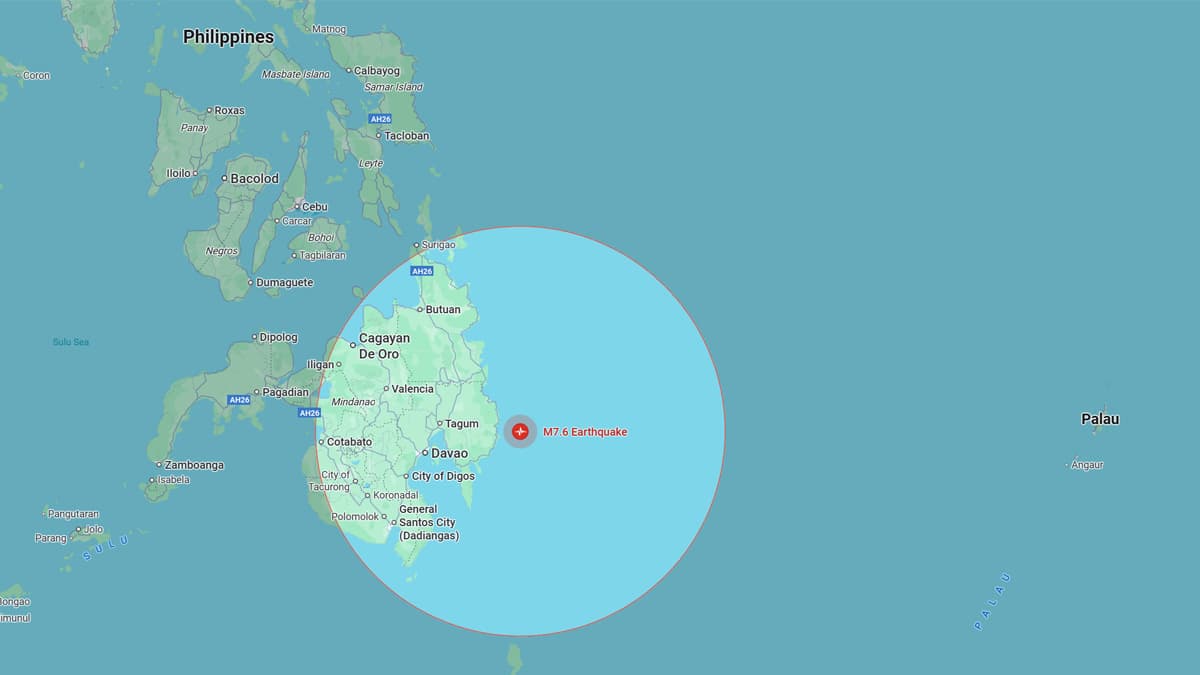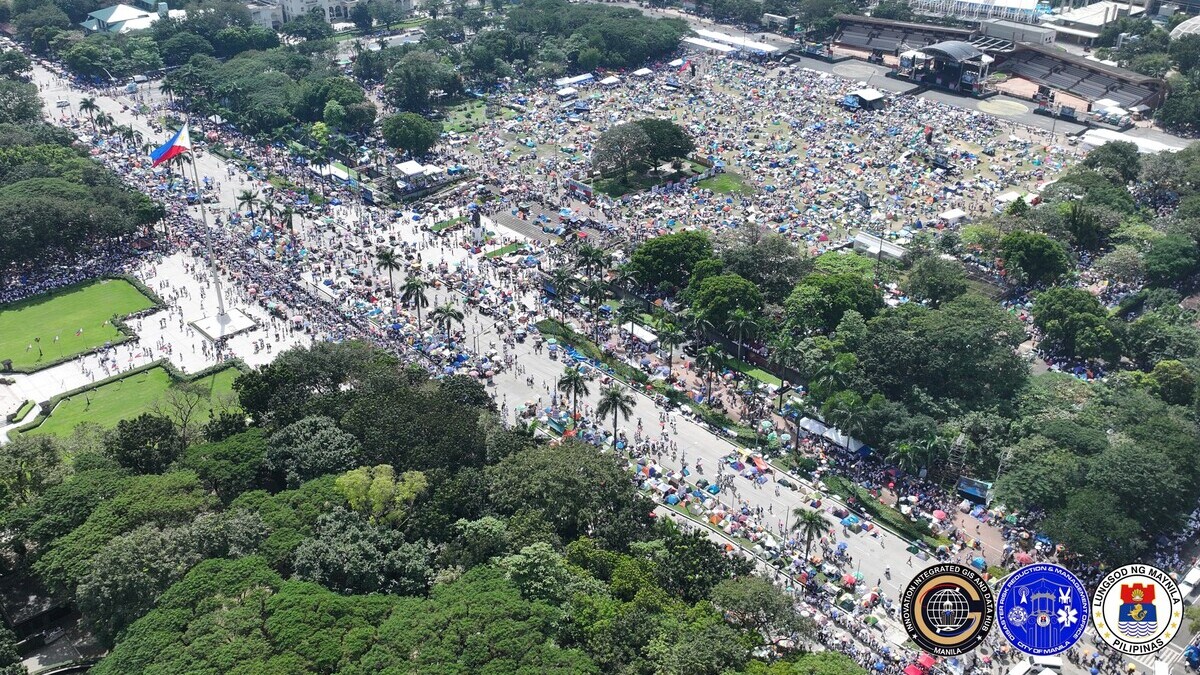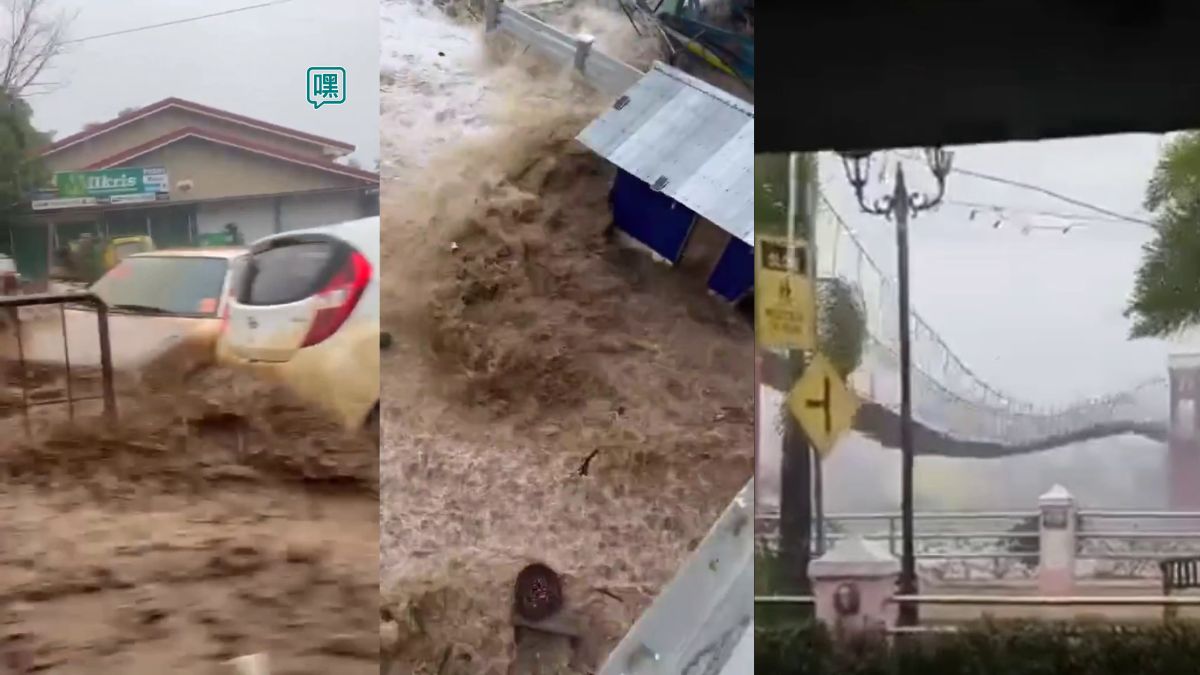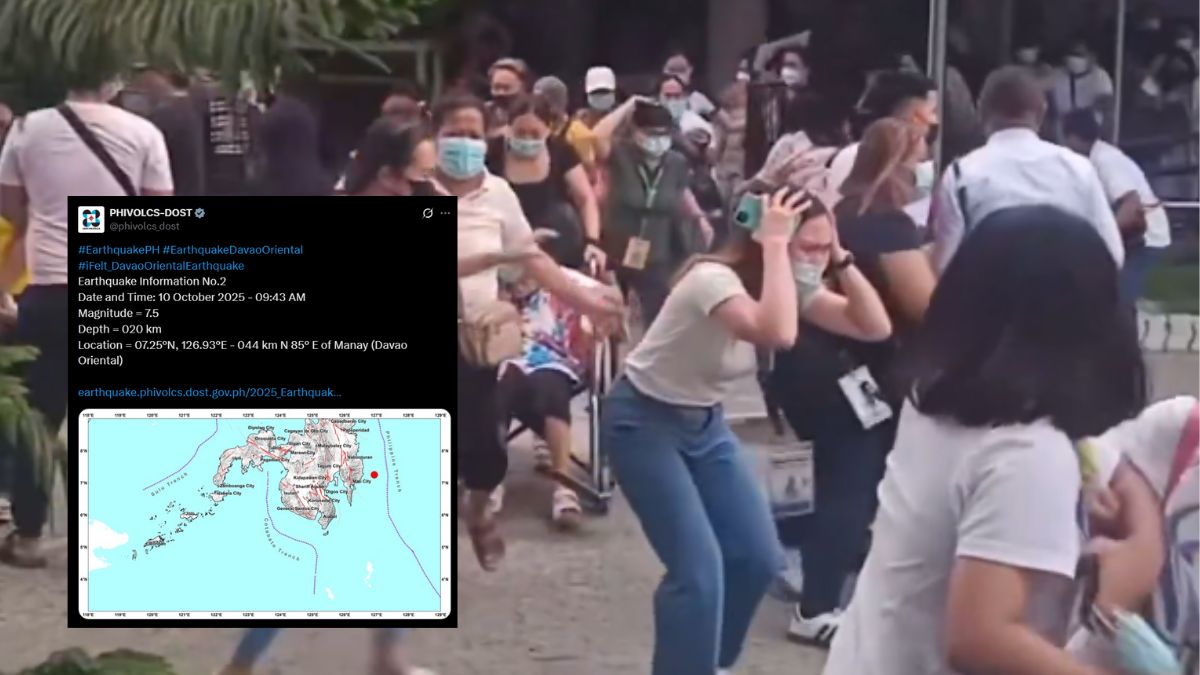Tsunami warnings issued after powerful 7.6 magnitude quake strikes off southern Philippines
A powerful offshore earthquake struck the southern Philippines on 10 October 2025, triggering regional tsunami warnings and evacuations. The tremor, estimated between magnitude 7.4 and 7.6, hit near Davao Oriental, shaking coastal communities and damaging buildings.

- A magnitude 7.6 offshore earthquake struck near Manay, Davao Oriental on 10 October 2025, prompting tsunami alerts and widespread evacuations.
- Authorities warned of waves over 1 metre above normal tides, with alerts also issued in Indonesia and Palau.
- The quake follows a deadly 6.9 magnitude tremor in Cebu two weeks earlier, raising concern over regional seismic activity.
A powerful earthquake struck offshore from the southern Philippines on 10 October 2025, prompting regional tsunami warnings and the evacuation of thousands from coastal communities. The earthquake occurred at approximately 09:43 AM Philippine time, with its epicentre located off Manay town in Davao Oriental, part of the Mindanao island group.
According to the Philippine Institute of Volcanology and Seismology (PHIVOLCS), the earthquake registered a magnitude of 7.6 and occurred at a shallow depth of 10 km, conditions conducive to generating significant shaking and potential tsunami waves.
Other agencies, including the European-Mediterranean Seismological Centre (EMSC), provided slightly different estimates, with a magnitude of 7.4 and a depth of 58 km. Differences in reported magnitude and depth are not unusual in early quake assessments and reflect varying seismic models and datasets.
Evacuation orders and tsunami forecasts
Shortly after the quake, PHIVOLCS issued tsunami warnings for a number of coastal provinces in central and southern Philippines. Residents in low-lying and coastal areas were urged to immediately evacuate to higher ground or move further inland.
The agency warned that tsunami waves exceeding 1 metre above the usual tide level could be expected along affected shorelines. While the size of the waves may vary by location, enclosed bays and narrow straits were identified as areas of particular concern due to the potential for wave amplification.
The Pacific Tsunami Warning Center (PTWC) in Hawaii also issued a warning, stating that hazardous tsunami waves were possible within 300 km of the epicentre, including parts of the Philippines, Indonesia, and Palau.
In Indonesia, the Meteorology, Climatology, and Geophysical Agency (BMKG) issued alerts for parts of northern Sulawesi and Papua, forecasting wave heights up to 50 cm. Though smaller than the waves expected in the Philippines, such levels can still pose dangers to people, small boats, and coastal infrastructure.
Initial reports of damage and response
In the aftermath of the earthquake, Davao Oriental Governor Edwin Jubahib reported that residents in the affected areas experienced panic, with many rushing out of homes and buildings during the shaking. Speaking to broadcaster DZMM, Jubahib said, “Some buildings were reported to have been damaged. It was very strong.”
As of the latest updates, no confirmed fatalities have been reported. However, communications with some local authorities remain limited, particularly in more remote coastal towns where infrastructure may have been affected.
The quake was felt strongly in nearby cities and provinces, prompting class suspensions and the closure of some government offices as precautionary measures.
This earthquake comes only two weeks after a deadly magnitude 6.9 quake struck the island of Cebu, which resulted in 72 confirmed deaths. That earlier event also occurred offshore and highlighted the vulnerability of coastal regions across the Philippine archipelago to seismic events.
Aftershocks and ongoing seismic activity
PHIVOLCS and other monitoring agencies have recorded multiple aftershocks, some exceeding magnitude 5.5, further rattling nerves in an already shaken region. While aftershocks are a normal part of seismic sequences, they can still pose dangers to weakened structures and hamper emergency response efforts.
Authorities have warned residents to remain cautious and avoid entering damaged buildings until structural assessments are completed. Emergency teams have been mobilised to assess damage, assist with evacuations, and monitor for further seismic activity.
Regional context: The Ring of Fire
The Philippines lies on the western edge of the Pacific “Ring of Fire”, a horseshoe-shaped region characterised by frequent earthquakes and volcanic activity due to the movement of tectonic plates. The country experiences more than 800 earthquakes annually, although most are too weak to be felt.
Large offshore quakes such as this most recent event typically originate along subduction zones, where one tectonic plate is forced beneath another. These geological settings are also capable of producing tsunamis, landslides, and liquefaction events, compounding the risks for communities in affected areas.
The Philippine Trench, located off the eastern coast of Mindanao, is known for generating powerful quakes, including the 1976 Moro Gulf earthquake and tsunami, which killed thousands.
Monitoring, preparedness, and next steps
PHIVOLCS continues to monitor the situation, providing regular updates on aftershocks, tsunami risks, and ongoing assessments. The National Disaster Risk Reduction and Management Council (NDRRMC) is coordinating with local governments to ensure emergency protocols are implemented effectively.
Residents in affected areas are advised to:
-
Follow evacuation orders and remain in designated safe zones until advised otherwise.
-
Monitor official government channels for updates.
-
Report structural damage or casualties to local authorities promptly.
-
Avoid spreading unverified information or panic on social media platforms.
As the situation develops, international and regional seismological organisations will refine their assessments, and local governments are expected to issue damage and casualty updates in the coming hours.








0 Comments